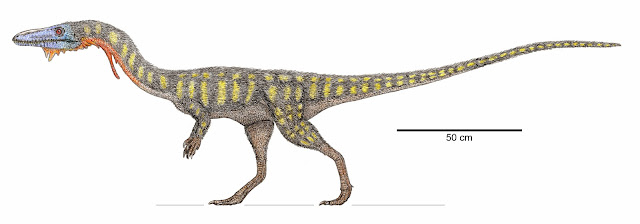Want a long post, you have to wait a little longer in your day; that and I honestly did not realize what time it was because I have been out and when in avoiding my computer because I am having trouble focusing on writing. On with the show!
My toy Dilophosaurus never had the ability to spit 20 feet as the ones in the Jurassic Park game are noted to achieve but it did, and still does (yes I have Jurassic Park Dilophosaurus and Velociraptor Series 1 figures from 1993; and I may still have Alan Grant too, but he is not as cool), manage a few feet when it is given a good hearty squeeze; Velociraptor bites when you squeeze the hindlimbs medially for those out of the know. That Dilophosaurus does not have a frill and, honestly, I am a bit sad that it does not have the associated frill given that that would be very accurate for the story and far more entertaining to play with. Dilophosaurus has far more popular culture credit than Jurassic Park, though.
One of the more popular areas that Dilophosaurus has marched into is the video game world. Rather than only making a mark in Jurassic Park games Dilophosaurus makes appearances in games like Primal Carnage. It has also been modded into other games like Zoo Tycoon, but I think Primal Carnage may be the non-Jurassic Park height of dinosaur video games; where else can you hunt dinosaurs with and against other people, or hunt people as dinosaurs, online after all? Dilophosaurus has also been modded into a lot of Minecraft and Spore videos.
"Analog" versions of Dilophosaurus in popular culture include many different skeletal reconstructions and displays, some of which we have seen during this week. The variation in these representations of Dilophosaurus are fantastic and actually fun to compare to one another. The Museum of Paleontology at Berkley has gone far enough to put together an audio guided tour of their analog/digital combined Dilophosaurus exhibit that is a lot of fun to listen to (Sam Welles made a few good points about the frill and skeletal anatomy that would have supported the frill). Despite stepping on some feet with the present known facts, there are a lot of supporting characters that back up a lot of the reconstructions out there; some sculptors and paleontologists putting them together highlight specifics more than other characters obviously. There are reasons for that, but we cannot, and do not have the time, to delve into every reconstruction and determine why certain characteristics were highlighted over others.
My toy Dilophosaurus never had the ability to spit 20 feet as the ones in the Jurassic Park game are noted to achieve but it did, and still does (yes I have Jurassic Park Dilophosaurus and Velociraptor Series 1 figures from 1993; and I may still have Alan Grant too, but he is not as cool), manage a few feet when it is given a good hearty squeeze; Velociraptor bites when you squeeze the hindlimbs medially for those out of the know. That Dilophosaurus does not have a frill and, honestly, I am a bit sad that it does not have the associated frill given that that would be very accurate for the story and far more entertaining to play with. Dilophosaurus has far more popular culture credit than Jurassic Park, though.
One of the more popular areas that Dilophosaurus has marched into is the video game world. Rather than only making a mark in Jurassic Park games Dilophosaurus makes appearances in games like Primal Carnage. It has also been modded into other games like Zoo Tycoon, but I think Primal Carnage may be the non-Jurassic Park height of dinosaur video games; where else can you hunt dinosaurs with and against other people, or hunt people as dinosaurs, online after all? Dilophosaurus has also been modded into a lot of Minecraft and Spore videos.
"Analog" versions of Dilophosaurus in popular culture include many different skeletal reconstructions and displays, some of which we have seen during this week. The variation in these representations of Dilophosaurus are fantastic and actually fun to compare to one another. The Museum of Paleontology at Berkley has gone far enough to put together an audio guided tour of their analog/digital combined Dilophosaurus exhibit that is a lot of fun to listen to (Sam Welles made a few good points about the frill and skeletal anatomy that would have supported the frill). Despite stepping on some feet with the present known facts, there are a lot of supporting characters that back up a lot of the reconstructions out there; some sculptors and paleontologists putting them together highlight specifics more than other characters obviously. There are reasons for that, but we cannot, and do not have the time, to delve into every reconstruction and determine why certain characteristics were highlighted over others.











